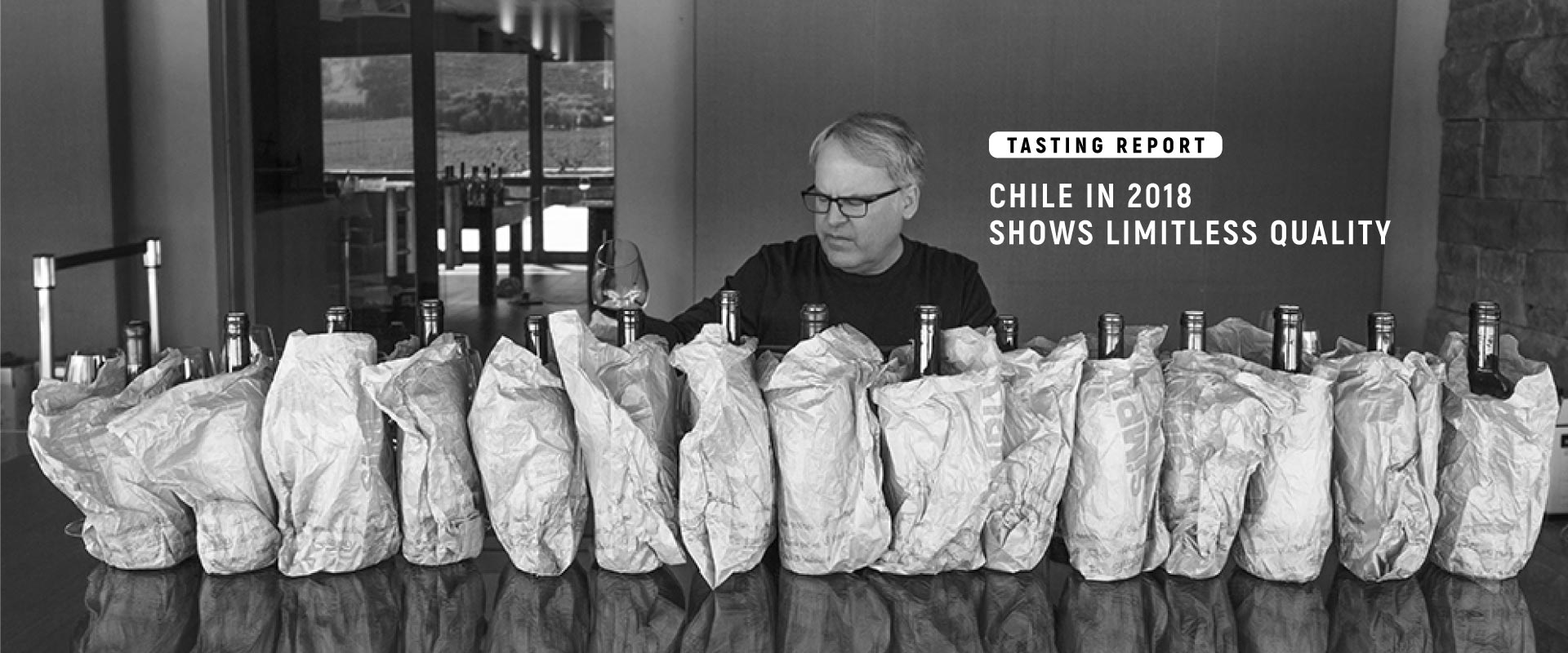
We’re sitting in the tasting room of Clos Apalta Residence — the Relais & Chateau hotel allied to the eponymous winery in the Colchagua Valley of Chile — with owner Charles de Bournet Marnier Lapostolle, and the light is really dramatic. The sun has just disappeared behind the high mountain next to the vineyards and its shadow now lies over them. In other words, they get two full hours of less sunlight than most of the valley. That might sound like a disadvantage at first, but in actual fact, the cooling of the grapes slows down their ripening and gives the red Clos Apalta the freshness and finesse that perfectly complement the wine’s enormous concentration. And it’s this combination that earned the spectacular 2015 Clos Apalta 100 points!
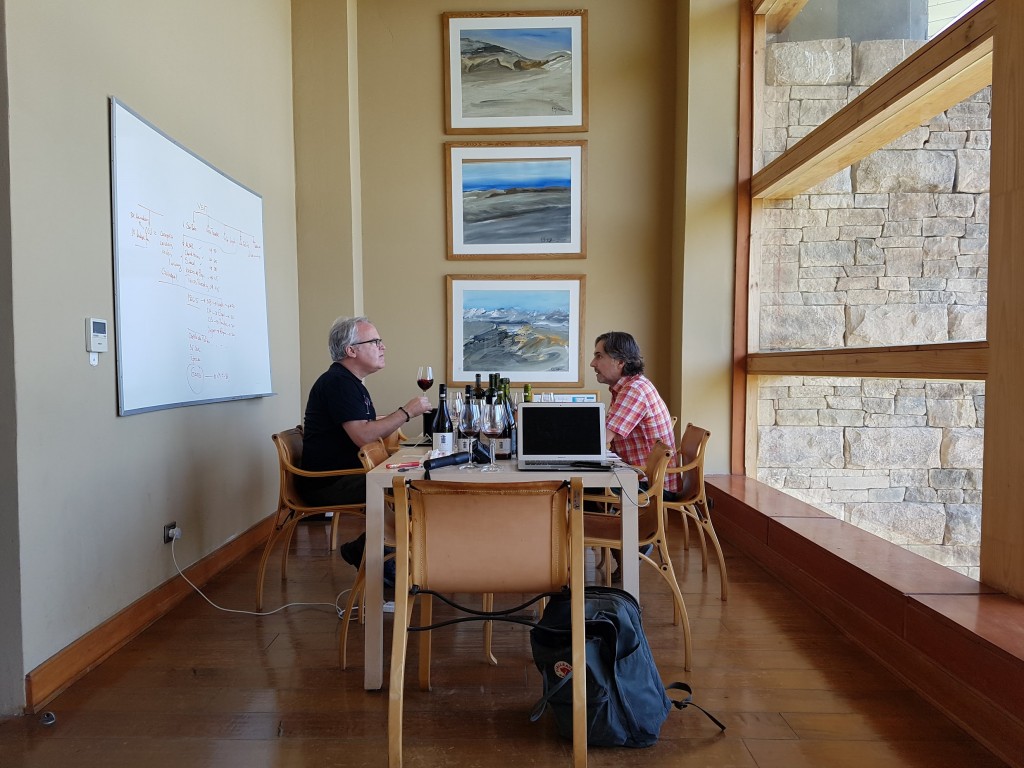
James spent an extensive amount of time with the wine producers in Chile, tasting various vintages and getting to know each of the bottles.
The sun is also going down on an amazing tasting of every vintage of Clos Apalta from the inaugural 1997 through to the 2015 during the same day. That confirmed several important things, beginning with the 100 points that we awarded to the 2014 vintage a year ago and the soon-to-be-released 2015. Those two consecutive vintages rated 100 points is a first for Chile. The tasting also demonstrated how the team of Charles, winemaker Jacques Begarie and Lapostelle group technical director Andrea Leon have tirelessly strived to refine this wine since they came together here in 2004. From everything they’ve said continuing, there is clearly foreseeable future in their program, and they illustrate the relentless quest of many winemakers for world-class quality in their wines.
Suddenly, Charles has an important observation about the new great wines of Chile. “We don’t know where the ceiling is, and each time we push quality up higher than we thought. It all depends on us! Aurelio Montes and Eduardo Chadwick paved the roads for us, making what we do possible, and we thank them for that.”
Indeed, our tasting of almost 1,000 wines in February illustrates the fact that the leading producers of Chile are currently in the process of finding out what their maximum quality is and where that ceiling is. From large well-known producers to tiny garage winemakers, the quality possibilities in winemaker for Chile seems endless. The fact that so many made outstanding quality wines in less-than-easy vintages as 2015 and 2016 underlines this.
The Montes winery in the same valley had just turned 30 and was the first to plant hillside vineyards in Chile back in 1992. Ever since, they’ve been pushing the quality envelope on wines from a handful of grape varieties which were planted since the beginning. His enormously fresh and aromatic Montes Syrah Apalta Folly 2014 (rated 96 points) was the highest scoring wine in this underrated category. Our tastings of this wine and other syrahs continue to convince us that the grape has a great future in Chile —maybe even better than the highly-touted pinot noir or cabernet sauvignon.

A precious selection of old bottles at Clos Apalta in Colchagua Valley of Chile.
Eduardo Chadwick runs a clutch of wineries of which Errazuriz dates back to 1870, but what he didn’t inherit was wines with a track record of greatness. They are his product and his vision and a tireless dedication to quality and promoting the nation’s achievements around the world. With the expansive but super-elegant Viñedo Chadwick Cabernet Sauvignon Valle de Maipo 2016 and Seña Valle de Aconcagua 2016 — which is a cabernet sauvignon-based blend — rating 99 and 98 points, he’s got plenty to be proud of. Last year, the wines that have scored 99 points and 100 points respectively were both from the 2015 vintage.
Chile is on a roll not just because of a handful of high-profile wines though. The quantity of good wine produced here is truly staggering. For instance, Concha y Toro is the world’s second-largest wine brand. They produce about 2.4 million cases — or close to 30 million bottles — of the Casillero del Diablo white label cabernet sauvignon. The combination of quantity and quality is very hard to beat anywhere on planet wine! And Concha y Toro is also the Chilean partner for the Almaviva joint venture winery with Château Mouton Rothschild in Bordeaux. The impressive Almaviva Puente Alto 2016 rated 97 points, and the 2015 was our Wine of the Year from our tastings of almost 18,000 wines in 2017; in other words, it was a perfect 100-pointer.
Although, we did find some disappointing wines amongst the hundreds we tasted on our trip to Chile in February. We identified some common mistakes such as picking too late, which led the wine to show jammy flavors, and/or throwing too much oak at wines with modest structure. It is less so about being marred by classic faults, the small number of poor Chilean wines simply just lacked the freshness and purity of fruit that is typical for the nation’s wines.
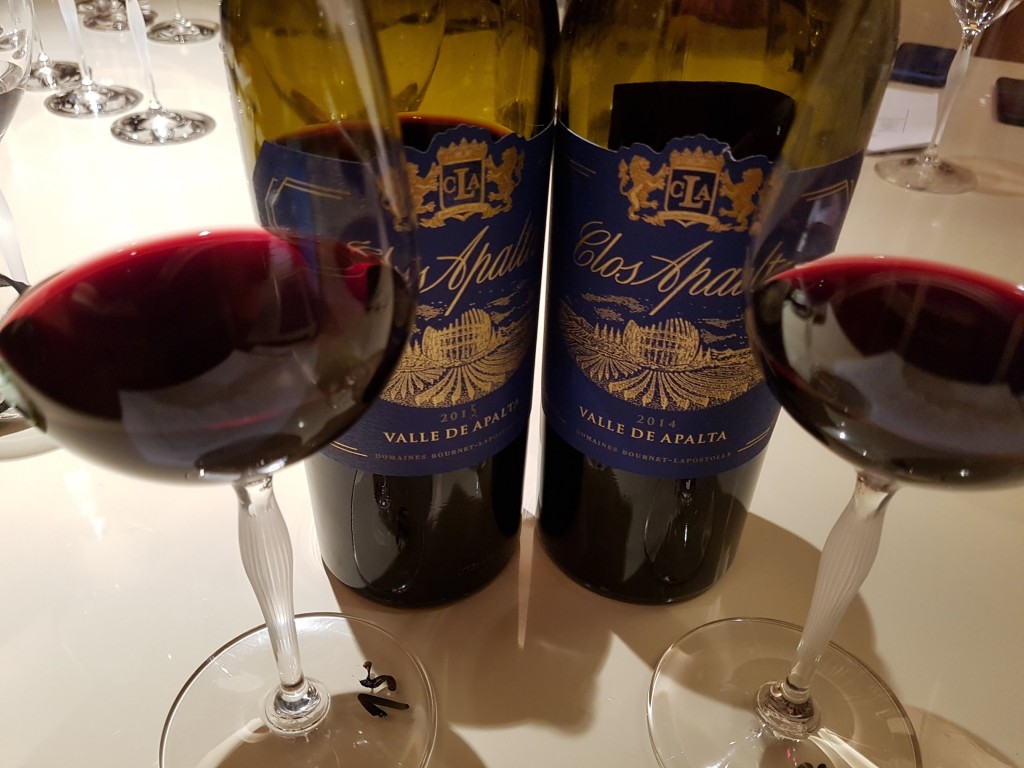
The two consecutive vintages — 2014 and 2015 — of Clos Apalta were both rated 100 points.
The high technical standard of contemporary Chilean red and white wines has plenty to do with the fact that the Chileans are often said to be the Switzerland of South America. It’s hard to imagine a country further removed from the clichéd image of dysfunction in South America. The economy is booming. Wine plays an increasingly important role in that, which is why the vineyard area in Chile has doubled to roughly 130,000 hectares since 1992. A decade after the free-trade treaty with China was signed, the combination of quality and value made China the biggest market for Chile’s wine exports with a value of just over $251.5 million in 2016. To further that, about 20% of the imported wine is Chilean wine, taking precious market share from the French who once thought they would dominate the market forever.
Asia is embracing the quality and reasonable prices of Chilean wines. It is buying and drinking the best and greatest names of Chile, and now, it is also looking into the smaller and independent producers —particularly China and South Korea. One name to follow is the ubiquitous independent winemakers’ association called MOVI. And some of these producers are crushing the Asian market. “One of my biggest markets now is China and they want to buy just about everything I make,” said Sven Bruchfeld of Polkura, one of the best producers of syrah in Chile. “I work with a small importer in China, and he and his clients love my wines. I could sell them my entire production if I wanted to but I don’t.”
The large number of winemakers who trained at the University of California in Davis is also a significant factor in Chile’s success. Comparisons with California are appropriate for other reasons, most notably the fact that both lie on the eastern edge of the Pacific Ocean with cold waters off the coast. This factor helps moderate the temperatures, giving the best vineyards of both a temperate Mediterranean climate. However, Chilean wines typically have brighter aromas and taste crisper than those of the same varietals from California.
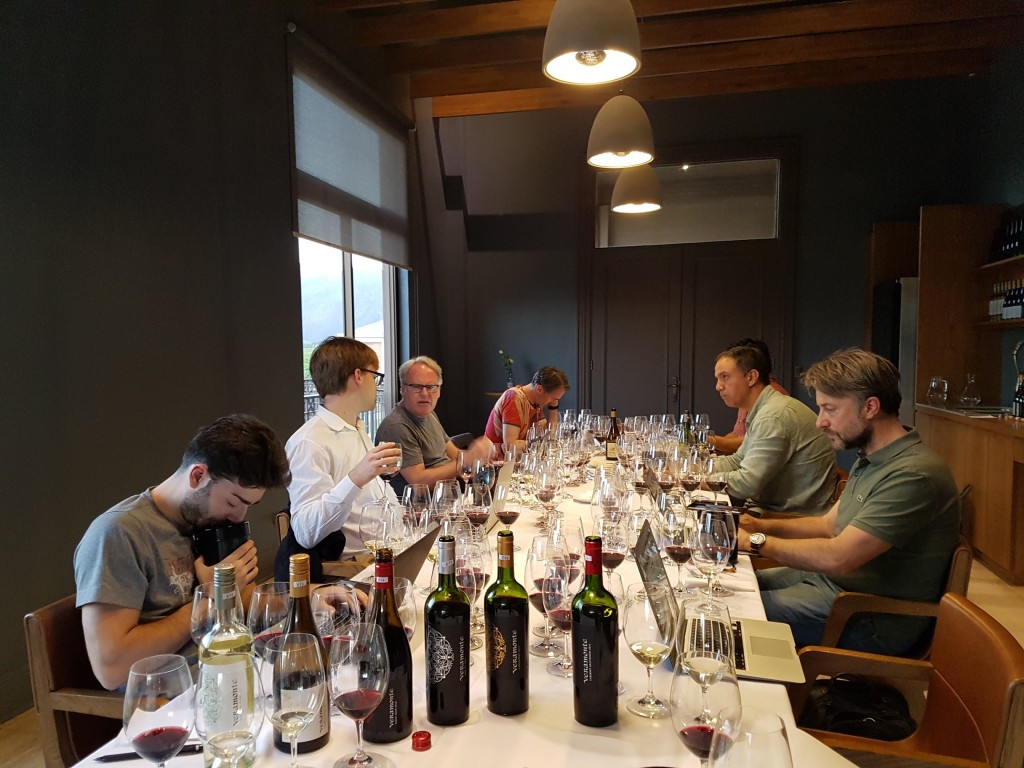
The JamesSuckling.com team also had a big tasting session at Ritual.
Something California lacks is carmenere, a red grape from Bordeaux that almost disappeared from there at the end of the 19th century but continues to thrive in Chile. For example, Clos Apalta is a blend based on at least 45% carmenere. Just shy of 9,000 hectares are planted with it in Chile, which is about a sixth of the vineyard area devoted to cabernet sauvignon, which is the dominant variety with about 37% of all plantings. Our tastings indicate that it makes sense, since it performs well both as a solo varietal and as a major component in blends — as long as wine producers do not pick the grape too late.
Statistically, the most important white grape in Chile is sauvignon blanc with just shy of 15%, but we found the quality of these wines mixed. Here, the problem is the rather widespread tendency to imitate New Zealand and the drive to establish Casablanca Valley in Chile as a global brand comparable to the Kiwi Marlborough region. For us, this is misguided because many of Chile’s best chardonnays come from Casablanca Valley, including the Ritual Chardonnay Valle de Casablanca 2017, one of our highest rated chardonnays ever with 93 points.
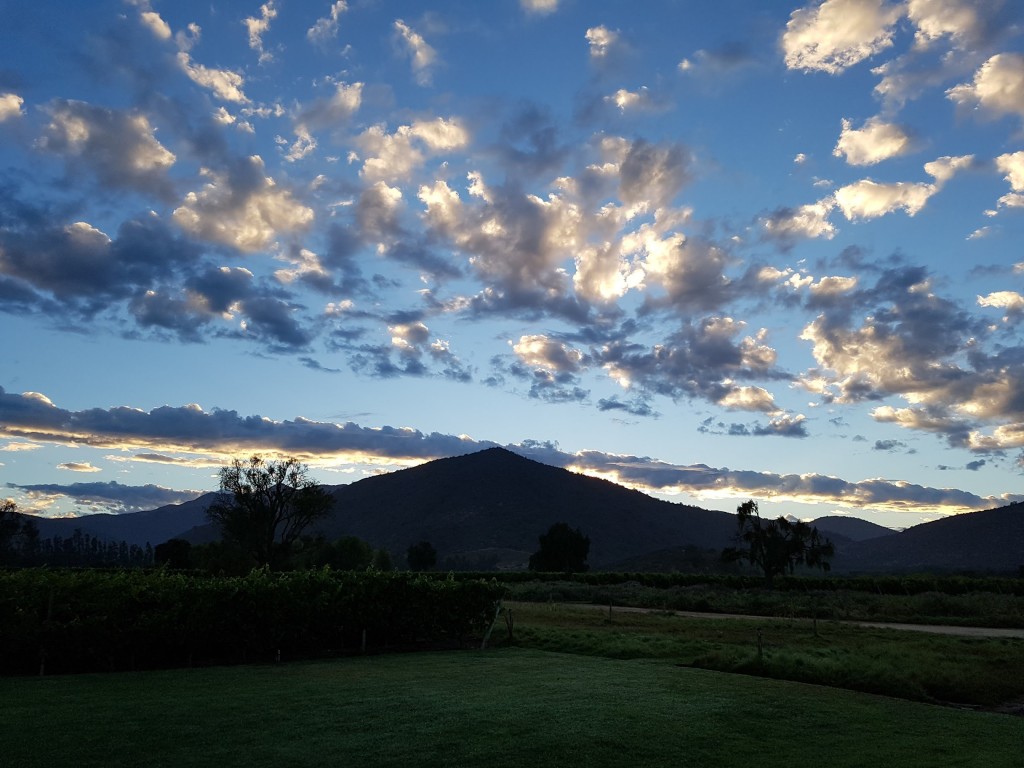
We believe in the great potential of the vineyards in Casablanca. We look forward to coming back!
Chilean vintages vary more than you might think. After the excellent 2015 came the atypically rainy 2016, from which the reds tend to be lighter and sometimes a bit washed out. Although the growing conditions were very good a question mark that hangs over 2017 because of over 40,000 hectares of forest fires in the fall. They pumped a lot of smoke into the atmosphere and some grapes were clearly tainted. Sometimes we wondered if the treatment to remove the taint from wines hasn’t caused more problems than it solved. The affected wines either show an ashtray character on the palate, bitterness in the finish or dilution and thinness overall.
However, for the moment, most of the current releases from Chile show many high points for wine consumers looking for bright, fresh reds and whites, which underline the continued greatness of the wine country. There has never been a better time to drink Chilean wines. — Contributing Editor Stuart Pigott with CEO/Editor James Suckling


Amazing!!